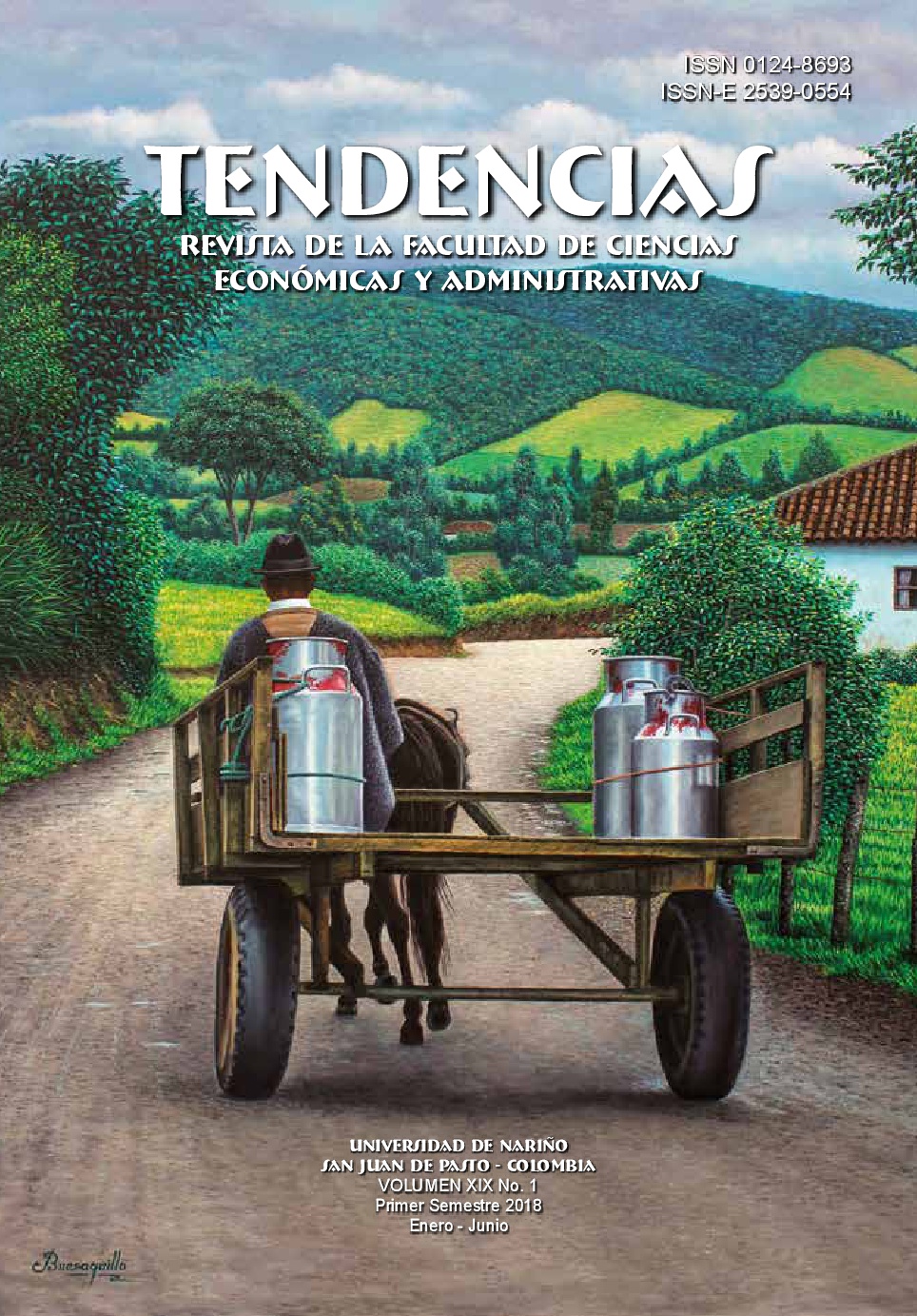Relevance of the instruments of business development offered by entities that conform the regional commission of competitiveness and innovation of the department of Quindío
DOI:
https://doi.org/10.22267/rtend.181901.87Keywords:
Regional development, cluster, value chains, competitivenessAbstract
The approach of the relevance of the instruments of business development offered by the entities that form the Regional Commission for Competitiveness and Innovation of Quindío, is based on three theoretical currents of academic literature: local and regional development theories and policies, strategies competitiveness and value chain analysis and clusters. In the analysis of the information obtained it was possible to determine that participatory strategic planning exercises are being carried out with a view to strengthening the competitive capacities of the business structure, but the offer of support does not take into account the stage of the life cycle of the companies or the specificities of the business model where they compete. The interinstitutional disarticulation is also evidenced and the focus on encouraging interrelationships between companies to stimulate, strengthen and develop competitive capacities is timidly reflected in some sectors. Finally, it is necessary to create a territorial information system to study the productive chains and obtain statistical data to design policies for regional productive development.
Downloads
References
(1) Alburquerque, F. (2004). Desarrollo económico local y descentralización en América Latina. Revista Cepal No. 82. Santiago de Chile.
(2) Baud, I.S.A and Post J. (2002). Realigning actors in an urbanizing world. Governance and institutions from a development perspective. ASHGATE, 2002.
(3) Barro, R. (1998). Determinants of Economic Growth: A Cross-Country Empirical Study. MIT Press Books, The MIT Press, Edition 1, Volume 1, Number 0262522543, April.
(4) Best, M.H. (1990). The new competition. Institutions of industrial restructuring. Cambridge: Polity Press.
(5) Blandon, L. (2012). Economic Restructuring and Value Chains: The Search for Regional Competitiveness in Colombia. International Institute of Social Studies. EUR-ISS.
(6) Cook P and Morgan, K (1998). The associational economy: firms, regions and innovation. Oxford, Oxford University Press.
(7) CRCIQ. (2009). Plan Regional de Competitividad del Quindío. Armenia.
(8) Esser, K. Hillebrand, W. Messner, D. and Meyer-Stamer, J. (1996). Systemic competitiveness. New governance patterns for industrial development. German Development Institute, Berlin, 1996 Frank Cass. www.meyer-stamer-dc/1996/sysco-book.pdf.
(9) Helmsing, A.H.J. (2001). Externalities, learning and governance: New perspectives on local economic development. Development and Change, Vol. 32, pp 227-308.
(10) Helmsing, A.H.J. (2000). Externalities, learning and governance perspectives on local economic development. Inaugural Address as Professor of Local Regional Development delivered on 27 January, 2000. ISS, The Hague.
(11) Meyer-Stamer, J. (1998). Clustering, Systemic competitiveness and commodity chains: How firms, business associations and government in Santa Catarina/Brazil respond to globalization. International Institute for Labor Studies, Geneva, 09-10 March, 1998.
(12) Pérez, B. (2000). Desarrollo Local: Manual de Uso. Editorial ESIC. Madrid, España.
(13) Porter, M. (1990). The competitive advantage of nations. New York: The Free Press.
(14) Porter, M. (1998). On Competition. Harvard Business School Press, 1998, 485p.
(15) Porter, M. (1998b). Clusters and the new economics of competition. Harvard Business Review 76(6): 77-90.
(16) Porter, M.E. (2003). Building the microeconomic foundation of prosperity: findings from the Microeconomic competitiveness index. The Global competitiveness Report, 2002-2003, pp.19-50. New York: Palgrave McMillan, World Economic Forum.
(17) Propaís. (2012). Diagnóstico del mercado de servicios de desarrollo empresarial
en Colombia: Fortalezas, retos y oportunidades. Bogotá.
(18) Knorringa, P. (2002). Revista Innovation and small enterprises in the Third World. Pp 48-65.
(19) Westen, G. (2002) ‘Embeddedness: the role of local factors in economic development’. In I. Baud and J. Post (eds), Realigning actors in an urbanizing world. Governance and institutions from a development perspective. Aldershot: Ashgate Publishers.
(20) Yokakul, N., & Zawdie, G. (2009). The role of triple helix for promoting social capital, industrial technology and innovation in the SME sector in Thailand. Science, Technology & Society, 14(1), 93-117.
(21) Zandniapour, L. Sebstad, J. y Snodgrass, D. (2004). Review of Impact Assessments of Selected Enterprise Development Projects. AMAP Business Development Services (BDS) Knowledge and Practice (K&P) Research Task Order.
Published
How to Cite
Issue
Section
License
Those authors who have publications with this journal, accept the following terms:
This journal is licensed under a Creative Commons Reconocimiento-NoComercial 4.0 Internacional License. The articles can be copied, distributed, adapted and communicated publicly, as long as the credits of the work are recognized and the respective source is quoted. This work can not be used for commercial purposes.
To increase their visibility, documents are sent to databases and indexing systems.
The content of the items is the responsibility of each author, and does not compromise in any way, journal or institution.







































